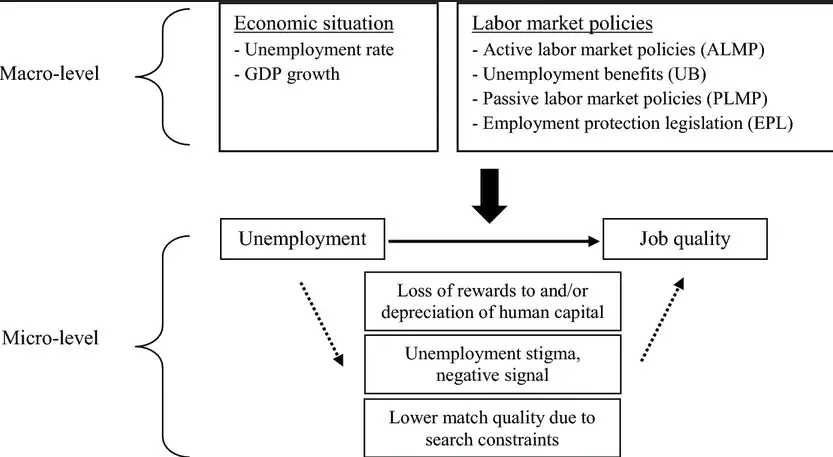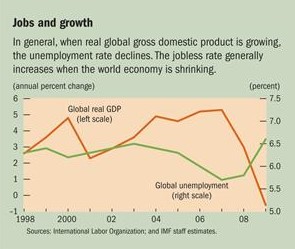The relationship between unemployment and GDP is a complex one that is often misunderstood. This blog post will explore this relationship, examining how a rise in unemployment affects GDP and vice versa. It will also look at the various economic theories that explain the link between the two, as well as the implications of this relationship for policy makers and the economy as a whole.
It will also look at the various economic theories that explain the link between the two, as well as the implications of this relationship for policy makers and the economy as a whole.
Causes of unemployment and its impact on gdp

Unemployment is an important economic indicator that can impact the growth of the GDP of a country. When people are unemployed, they are no longer able to contribute to the economic activity of the nation.
This leads to a decrease in production and a decrease in the amount of goods and services that are available for consumption. As a result, there is a decrease in the GDP of the nation. The relation between unemployment and GDP is an important one, as it can affect the economic health of a nation.
When unemployment is high, it can lead to a decrease in consumer spending, which in turn can lead to a decrease in production and economic growth. In contrast, when unemployment is low, it can lead to an increase in consumer spending, which can lead to a rise in production and economic growth. Therefore, it is important that governments work to reduce unemployment, in order to help ensure a healthy and prosperous economy.
Therefore, it is important that governments work to reduce unemployment, in order to help ensure a healthy and prosperous economy.
Historical analysis of unemployment and gdp

The relationship between unemployment and gross domestic product (GDP) is an important one for economists and policy makers to understand. Historically, when unemployment increases, GDP tends to decrease, meaning fewer jobs, lower wages, and a weaker economy overall. However, the opposite can also be true—when GDP increases, unemployment tends to decrease, creating more jobs and higher wages.
However, the opposite can also be true—when GDP increases, unemployment tends to decrease, creating more jobs and higher wages. Understanding this relationship is important for governments to make sound economic and fiscal policies, as well as for businesses to make more informed decisions on hiring and investment. By studying the historical data, we can gain a better understanding of how unemployment and GDP interact, and what implications this may have for the future.
Policy implications of unemployment and gdp
The relationship between unemployment and GDP is a complex one that has significant policy implications. When unemployment rates are high, it typically means that economic output is low and that GDP is suffering. This can lead to a decrease in consumer spending and investment, as people are not willing to spend money when they are out of work.
This decrease in spending can have a ripple effect on the economy, leading to a decrease in jobs, wages, and economic growth. Governments can use fiscal and monetary policies to try to stimulate the economy and reduce unemployment, but these policies often have long-term implications that can be difficult to predict.
It’s important to remember that the relationship between unemployment and GDP is a complex one, and that policy makers must carefully consider the long-term consequences of their actions.
Case studies of countries with high unemployment and low gdp
Recent research has shown that there is a strong correlation between unemployment and GDP. Countries with high unemployment often have low GDP, and vice versa. This means that a country’s economic development is closely related to its unemployment rate.
This means that a country’s economic development is closely related to its unemployment rate. To better understand this relationship, let’s look at some case studies of countries with high unemployment and low GDP. Countries such as Spain, Greece, and Italy have all experienced significant economic downturns in recent years, and all have had high levels of unemployment.
In these cases, the weaker economy has led to fewer job opportunities and an increased unemployment rate. This, in turn, has had a significant effect on the country’s GDP.
Long-term solutions to reduce unemployment and increase gdp
The relationship between unemployment and GDP is an important one to consider when discussing the long-term solutions to reduce unemployment and increase GDP. A high unemployment rate generally leads to a decrease in economic output, while a decrease in unemployment can lead to an increase in economic activity.
However, when people are employed, they are able to generate income which can be used to purchase goods and services, which in turn contributes to GDP growth. Therefore, policies that focus on reducing unemployment and supporting job creation can help to increase GDP over the long-term.
Additionally, policies that support skills training and education can help to ensure that people are prepared to enter the workforce and are able to contribute to economic growth. Ultimately, by focusing on reducing unemployment and increasing the skills of the workforce, governments can help to ensure long-term economic growth.
Final Touch
The relationship between unemployment and GDP is complex and depends on a number of factors. In general, when unemployment is high, GDP tends to suffer.
Conversely, when unemployment is low, GDP usually increases as more people are employed and have more money to spend. However, the relationship between unemployment and GDP is not always linear, as other factors such as consumer confidence, business investment, and government policy can also influence GDP growth.
Ultimately, understanding the relationship between unemployment and GDP can help policymakers craft effective economic policies and better understand the overall state of the economy.

